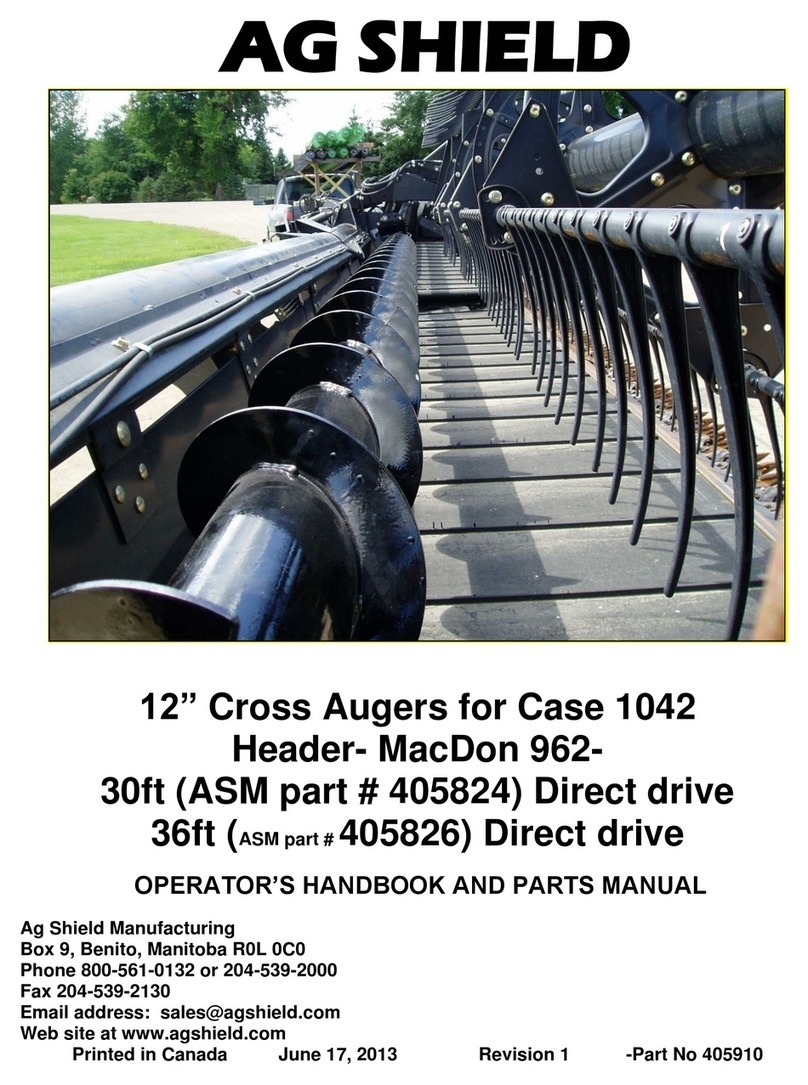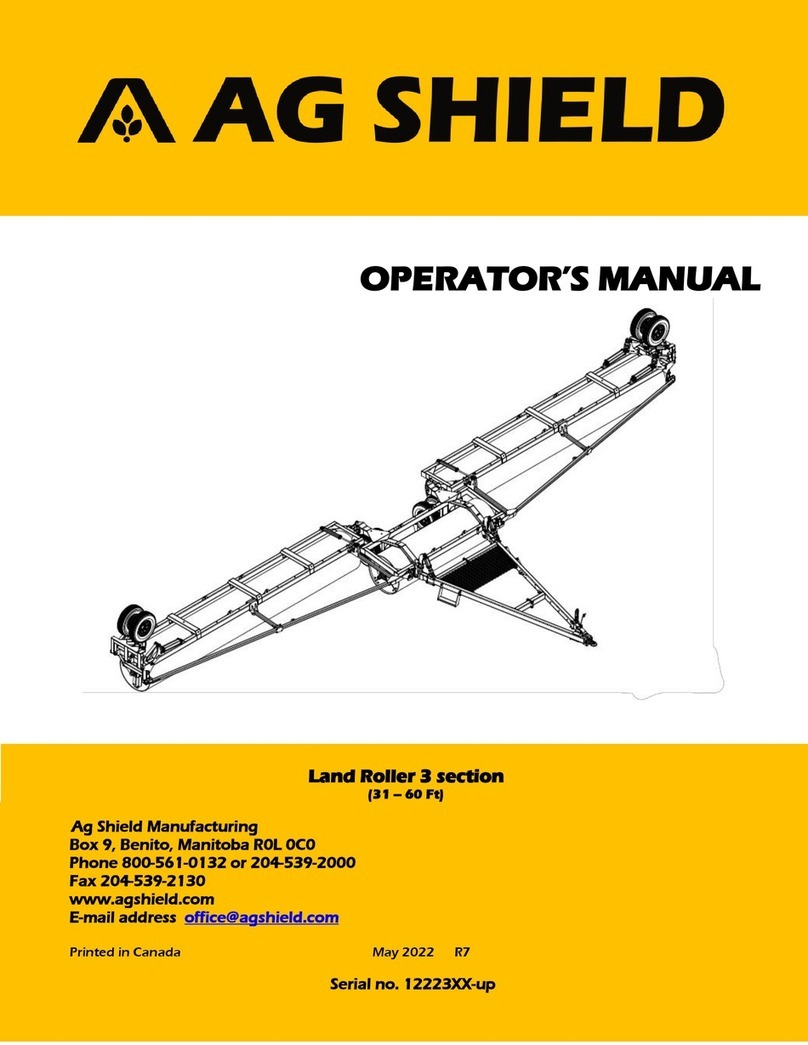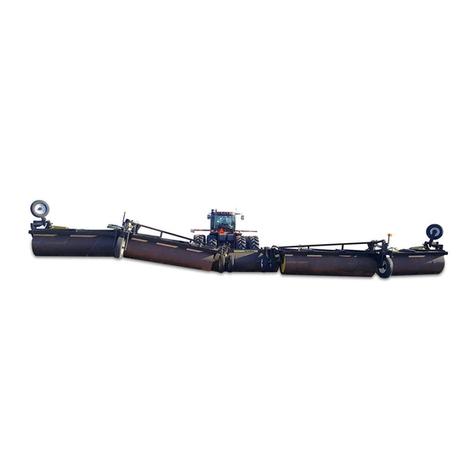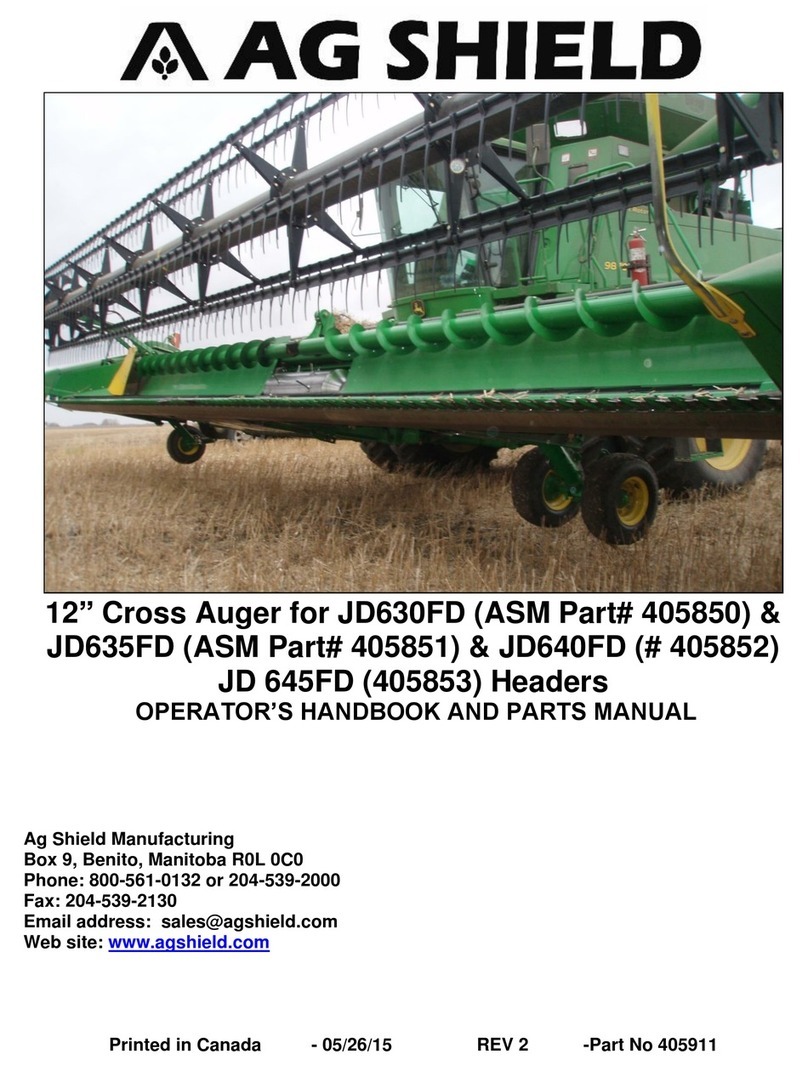
6
2.1
SAFETY OVERVIEW
YOU
are responsible for the
SAFE
operation and
maintenance of your Ag Shield Sprayer.
YOU
must
ensure that you and anyone else who is going t
o
operate, maintain or work around the Sprayer be
familiar with the operating and mainte
nance
procedures and related
SAFETY
informa
tion
contained in this manual. This manual will take you
step
-
by
-
step through your working day and alerts you
to all good s
afety practices that should be adhered to
while operating the Sprayer.
1
Remember,
YOU
are the key to safety. Good
safety practices not only protect you but also the
people around you. Make these practices a
working part of your safety program. Be certain
t
hat
EVERYONE
operating this equipment is
familiar with the recommended operating and
maintenance procedures and follows all the
safety precautions. Most accidents can be
prevented. Do not risk injury or death by ignoring
good safety practices.
Sprayer own
ers must give operating instruc
tions to
operators or employees before allow
ing them to
operate the Sprayer, and at least annually
thereafter per OSHA regulation 1928.57.
The most important safety device on this
equipment is a
SAFE
operator. It is the op
erator's
responsibility to read and understand
ALL
Safety
and Operating instructions in the manual and to
follow these. All acci
dents can be avoided.
A person who has not read and understood all
operating and safety instructions is not quali
fied to
oper
ate the machine. An untrained operator
exposes himself and bystanders to possible
serious injury or death.
Do not modify the equipment in any way. Un
-
authorized modification may impair the func
tion
and/or safety and could affect the life of the
equipment
.
Think SAFETY! Work SAFELY!
2.2
GENERAL SAFETY
1.
Read and understand the
Operator's Manual and all
safety signs before operating,
maintaining, adjusting or
unplugging the Sprayer.
2.
Only trained competent persons shall operate the
Sprayer. An untrai
ned operator is not qualified to
operate the machine.
3.
Have a first
-
aid kit available
for use should the need
arise and know how to use
it.
4.
Have a fire extinguisher
available for use should the
need arise and know how to
use it.
5.
Do not allow riders.
6. Wear appropriate
protective gear. This list
includes but is not limited
to:
A hard hat
Protective shoes
with slip resistant
soles
Protective glasses or goggles
Heavy gloves
Wet weather gear
Hearing protection
Respirator or filter mask
7.
Stop the engi
ne, place all controls in neutral, set
park brake, remove ignition key and wait for all
moving parts to stop before servicing, adjusting,
repairing or unplugging.
8.
Read chemical manufacturers warnings, in
-
structions and procedures before starting and
follo
w them exactly.
9.
Find the phone number for the poison control
center for your area.
10.
Review safety related items with all personnel
annually.
































